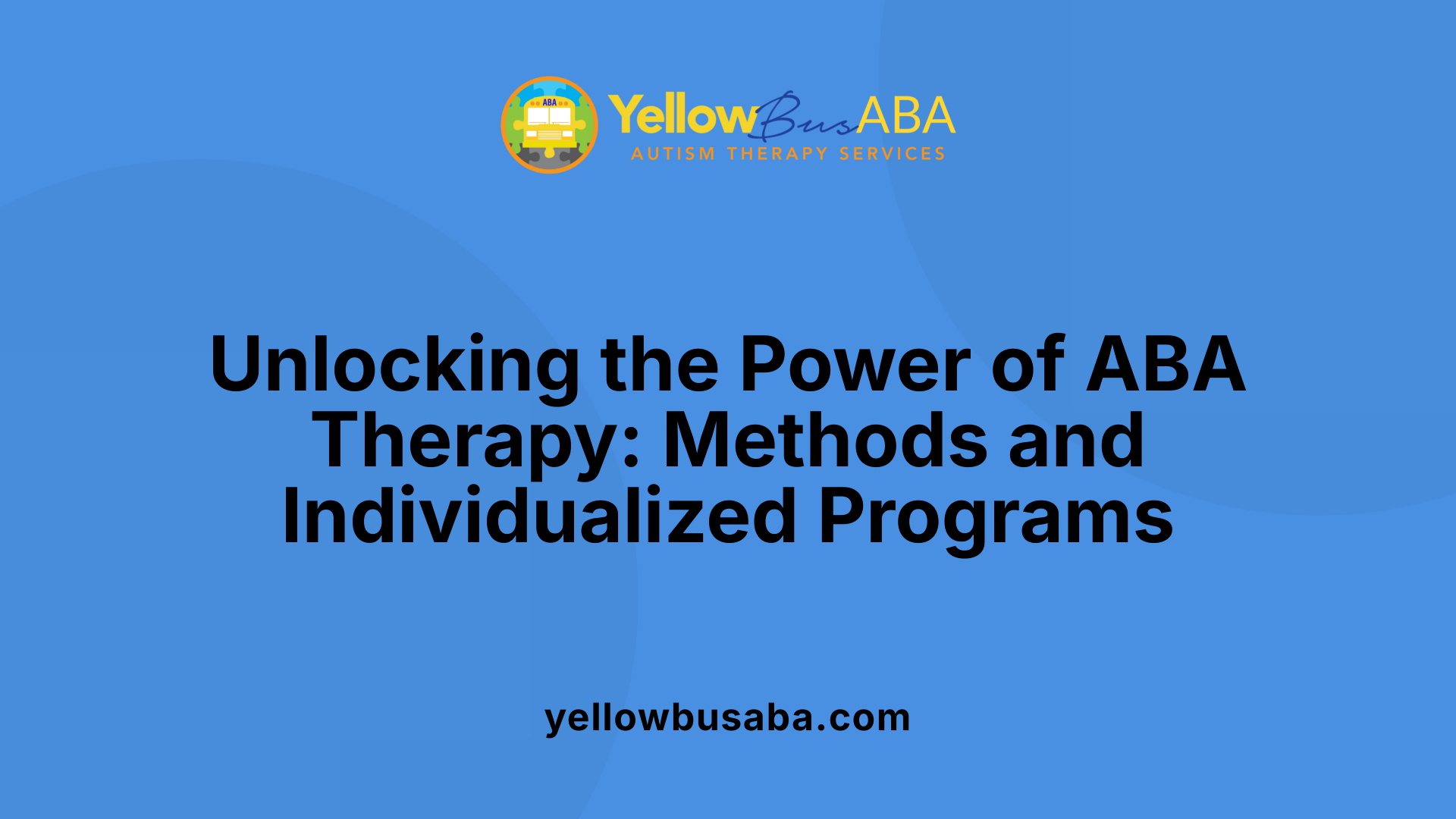Building Foundations for Positive Social Interactions at Home
Applied Behavior Analysis (ABA) therapy stands as a cornerstone in supporting children with autism, not only through direct intervention but crucially through empowering parents. ABA parent training equips caregivers with essential tools to foster positive social interactions in familiar home environments. This article explores how tailored ABA techniques, delivered via comprehensive parent training, can reinforce therapeutic goals, manage challenging behaviors, and promote meaningful communication and social skills at home.
Understanding Applied Behavior Analysis (ABA) Therapy and Its Role

What is applied behavior analysis (ABA) therapy?
Applied Behavior Analysis (ABA) therapy is an evidence-based approach focused on improving socially significant behaviors through scientific principles of learning and behavior. It systematically applies methods like positive reinforcement, Discrete Trial Training (DTT), and naturalistic techniques such as Pivotal Response Treatment (PRT) to encourage helpful behaviors and reduce harmful ones. ABA therapy targets areas such as communication, social skills, behavior management, and daily living tasks.
How are ABA programs individualized?
Each ABA program is carefully tailored to a child’s unique needs, guided by assessments conducted by trained professionals, typically Board-Certified Behavior Analysts (BCBAs). Individualized programs focus on specific challenges, whether it be communication delays, behavioral issues, or social skill development. By breaking complex skills into manageable steps and using reinforcement strategies, the therapy supports skill growth that is meaningful to each child’s progress.
Where can ABA therapy be implemented?
ABA interventions can be delivered across various environments including the child’s home, school, and specialized therapy centers. This flexibility allows skills learned in therapy to be practiced in real-life settings, which enhances generalization and adaptation. Structured routines within these environments help maintain predictability, reducing anxiety for children with autism.
What roles do professionals and parents play?
Professionals, especially those with advanced expertise, design and oversee ABA programs, ensuring evidence-based, high-quality services. Parent involvement is vital, as training equips caregivers with techniques like positive reinforcement and task analysis, enabling them to reinforce skills consistently at home. Interactive parent training sessions involve demonstrations and role-playing, fostering practical skill application to support the child’s growth beyond therapy sessions.
The Benefits of ABA Therapy for Children with Autism

How does ABA therapy benefit individuals with autism?
ABA (Applied Behavior Analysis) therapy offers numerous benefits for children with autism by utilizing evidence-based strategies to improve a broad range of behaviors. This approach focuses on increasing positive behaviors such as communication, social skills, and daily living tasks, while reducing challenging behaviors. The therapy is highly tailored to each child's unique needs, ensuring individualized goals and progress tracking by experienced specialists.
Positive behavioral outcomes
One of the core strengths of ABA therapy is its emphasis on positive reinforcement. By rewarding desired behaviors consistently, children are encouraged to repeat those actions, leading to sustained behavioral improvements. Techniques like discrete trial training and prompting break down complex tasks into smaller steps, making learning manageable and effective. Structured reinforcement schedules and gradual fading of prompts further promote independence.
Social skills and communication improvements
ABA therapy supports the development of vital social and communication skills. Methods such as modeling, social stories, role-playing, and video modeling help children understand and practice social interactions. Additionally, non-verbal communication—including body language and facial expressions—is emphasized to foster comprehensive social understanding. Functional Communication Training (FCT) equips children with alternative communication methods like picture exchange systems, which reduce frustration and improve expressive abilities.
Early intervention advantages
Starting ABA therapy early in a child's development leads to significant gains. Early intervention capitalizes on critical periods for learning, helping children acquire foundational skills that improve long-term independence. The supportive, structured environment of ABA therapy reduces anxiety and promotes consistent progress through predictable routines and sensory-friendly modifications.
Individualized goal-setting and progress
Every ABA program is designed following a thorough assessment of the child's strengths and challenges. This ensures that therapy targets specific behaviors and skills relevant to the child's daily life. Frequent collaboration with parents and caregivers allows for skills learned in therapy to be reinforced at home, promoting generalization across environments. Masters and Doctoral-level experts with decades of experience guide these efforts, providing high-quality, evidence-based care.
| Aspect | Description | Practical Impact |
|---|---|---|
| Positive Reinforcement | Immediate rewards for desired behaviors | Encourages repetition and learning |
| Social Skills Training | Use of modeling, role-playing, and social stories | Improves peer interactions and communication |
| Early Intervention | Beginning therapy at a young age | Maximizes developmental gains |
| Individualized Programs | Assessing unique needs to tailor goals | Targets specific challenges, enhancing progress |
| Parent Involvement | Training parents to apply ABA strategies at home | Reinforces therapy and supports skill generalization |
Who Provides ABA Therapy and Parent Training?

Who typically provides ABA therapy services?
ABA therapy services are delivered by qualified and licensed professionals trained specifically in behavioral interventions. Common providers include Board Certified Behavior Analysts (BCBAs), licensed psychologists, marriage and family therapists, and licensed clinical social workers. These experts have extensive education and often more than 20 years of experience, ensuring that therapy is based on proven, evidence-based practices.
What roles do behavior analysts and interdisciplinary teams play?
Behavior analysts, especially BCBAs, lead the design and implementation of individualized ABA programs tailored to each child's unique needs. These professionals assess behaviors, design intervention plans, and measure progress. They often work within interdisciplinary teams that may include speech therapists, occupational therapists, and educators to provide comprehensive support addressing communication, sensory processing, and social development.
How are parents involved in ABA therapy?
Parental involvement is a critical part of effective ABA therapy. Parents receive specialized training and coaching to implement ABA strategies at home, such as positive reinforcement, prompting, and behavior management techniques. This empowerment allows families to reinforce therapy goals consistently and help generalize learned skills into daily routines, creating a supportive and predictable home environment.
Where do ABA training sessions take place?
ABA therapy and parent training happen in various settings to maximize convenience and effectiveness. Sessions can be conducted in clinics, schools, or community centers. Additionally, many programs provide services directly in the home or through virtual platforms, enabling more naturalistic learning and easier integration of skills into everyday life. This flexibility supports ongoing collaboration between therapists and families to optimize outcomes.
Essential ABA Techniques for Fostering Social Skills at Home

What techniques are commonly used in ABA therapy?
ABA therapy employs several effective techniques to teach and reinforce social skills and other behaviors. Among the most important are positive reinforcement, task analysis combined with discrete trial training (DTT), the strategic use of prompts and visual supports, and interactive methods like modeling, social stories, and role-playing.
Positive reinforcement and its application
Positive reinforcement involves immediately rewarding a desired behavior to encourage its repetition. Parents can use tangible rewards like small toys or treats, and social praise such as verbal encouragement or hugs. Consistently applying these rewards helps children recognize and repeat positive behaviors, fostering skill development and reducing challenging behaviors.
Task analysis and discrete trial training
Task analysis breaks down complex skills into smaller, manageable steps. For example, learning to tie shoelaces can be divided into several sequential actions. Discrete trial training is a structured teaching approach that focuses on these small tasks one at a time, using repetition and reinforcement to promote mastery. This step-by-step method makes learning more approachable and effective for children with autism.
Use of prompts and visual supports
Parents learn to use prompts—verbal, physical, or visual—to guide their children toward correct responses. These prompts are gradually faded to encourage independence. Visual supports such as picture charts, schedules, and social stories help children understand routines and expectations, especially benefiting those with communication challenges. These tools clarify tasks and reduce anxiety by providing clear structure.
Modeling, social stories, and role-playing
Modeling involves demonstrating appropriate social behavior for the child to imitate. Social stories describe specific social situations and expected responses in simple, relatable language, helping children prepare for real-life interactions. Role-playing allows the child to practice social skills in a controlled, supportive environment. Together, these techniques build children's competence and confidence in social settings.
Integrating ABA Strategies into Daily Home Routines
How Can ABA Methods Be Embedded in Everyday Activities?
Parents trained in ABA strategies can incorporate techniques like positive reinforcement and task analysis directly into daily routines. For example, breaking down multi-step tasks such as brushing teeth or dressing into smaller steps enables a child to learn with less frustration. Immediate rewards or praise for completing each step encourage repetition and build confidence. Parents also use prompts—verbal, visual, or physical—to guide their child, gradually reducing assistance as independence improves.
What Supports Generalization of Skills Across Settings?
Generalization is the process of applying learned skills in various environments beyond therapy sessions. Parents play a critical role by consistently reinforcing targeted behaviors at home, school, and community settings. This may include using visual supports like picture schedules or choice boards to help children understand expectations in different places. Collaborating with teachers and other caregivers ensures a uniform approach, helping children adapt skills like social interactions and communication in real life.
Why Are Structured and Predictable Environments Important?
Children with autism benefit from structured routines and predictable settings to reduce anxiety and support positive behavior. Creating consistent daily schedules, clearly outlining expectations, and preparing the child for transitions helps them feel secure. Structured environments also allow easier integration of ABA techniques, making it simpler for parents to implement training strategies seamlessly.
How Do Visual Supports and Schedules Aid Learning?
Visual supports, including behavior charts, social stories, and picture schedules, provide clear, accessible cues that enhance understanding, especially for children with communication challenges. These tools can signify routines, anticipated activities, or expected behaviors, reducing confusion and resistance. Incorporating visual aids into daily routines reinforces learning and helps children manage changes more confidently.
Supporting Communication Development through Parent Training
What is Functional Communication Training (FCT)?
Functional Communication Training (FCT) is a critical approach in parent training that aims to teach children with autism alternative ways to express their needs and desires. This strategy helps reduce frustration and behavioral challenges by providing effective communication methods.
How are AAC Devices and Communication Systems Used?
Parent training includes guidance on the use of Augmentative and Alternative Communication (AAC) devices, such as speech-generating devices or picture exchange systems like PECS. These tools enable non-verbal or minimally verbal children to communicate effectively with their caregivers and peers.
How Are Alternative Communication Strategies Taught?
Parents learn techniques to integrate communication supports into daily routines. This includes applying visual supports such as picture charts and social stories, as well as modeling and prompting to encourage the child to use gestures, signs, or AAC tools.
How Does Parent Training Help Reduce Frustration and Behavioral Challenges?
By equipping parents with the ability to recognize communication needs and respond positively, training reduces behavioral issues often caused by communication barriers. The use of FCT and AAC decreases frustration, providing the child with more successful interactions and promoting positive behaviors.
Through hands-on, interactive training, parents become confident facilitators of their child's communication growth, ensuring the skills learned in therapy translate effectively to the home environment.
Managing Challenging Behaviors to Enhance Social Experiences
Identifying Behavioral Triggers
Understanding what prompts challenging behaviors in children with autism is a crucial first step. Parent training programs emphasize recognizing these triggers—whether they involve sensory sensitivities, transitions between activities, or social demands—to better anticipate and prevent outbursts or resistance.
Implementing Positive Behavior Supports
ABA-based strategies focus on positive reinforcement to encourage desirable behaviors. Parents learn to reward appropriate social interactions and compliance immediately and consistently, using tangible rewards or social praise. This approach reduces challenging behaviors by reinforcing what a child should do.
Teaching Coping Mechanisms and Problem-Solving
Training includes equipping children with methods to manage their emotions and social conflicts. Techniques such as role-playing and social stories help children practice handling situations calmly and effectively. Conflict resolution and problem-solving skills are integral parts of the lessons, making social experiences more positive.
Use of Reinforcement Schedules and Fading Prompts
Parents are guided on how to apply reinforcement schedules strategically—initially praising every correct behavior, then shifting to intermittent rewards to maintain skills. Prompting methods (verbal, physical, visual) are used to guide children toward appropriate responses, with gradual fading to promote independence and generalization across settings.
By combining these behavior management strategies, parent training empowers caregivers to support their children's social development at home, reinforcing therapy gains and enhancing real-world social experiences.
Measuring Progress and Adjusting Parent-Led ABA Interventions
How is the effectiveness of ABA therapy measured?
The effectiveness of ABA therapy is measured systematically through detailed data collection by parents. This includes tracking specific behaviors targeted in therapy such as communication improvements, social interactions, and daily living skills. Parents play a vital role in recording occurrences of these behaviors during daily routines, providing therapists with valuable information to assess progress.
Regular assessments are conducted using standardized tests, observational checklists, and skill tracking tools. These assessments help identify improvements or any areas needing further focus. Quantitative analyses, including statistical methods, help demonstrate the therapy’s effectiveness over time and across different skill domains.
Adjusting approaches based on progress
Ongoing monitoring allows both parents and therapists to adjust intervention strategies as needed. If progress plateaus or challenges persist, training techniques or reinforcement strategies can be modified to better suit the child's needs. This flexibility ensures that therapy remains individualized and targets the most impactful areas.
Collaboration with therapists for effective outcomes
Collaboration between parents and therapists is essential. Parents share daily data and observations, while therapists analyze this information to fine-tune treatment goals. Regular meetings and communication facilitate adjustments to ABA programs, ensuring that interventions reflect the child’s evolving needs and maximize effective skill generalization.
In summary, thorough data collection by parents, continuous assessment, and active collaboration with therapists help measure progress and dynamically adjust ABA interventions to optimize outcomes for children with autism.
Empowering Parents to Nurture Social Success
ABA parent training is a transformative approach that empowers families to actively participate in their child's social and behavioral development. By mastering evidence-based techniques such as positive reinforcement, task analysis, and communication strategies, parents can create nurturing home environments that reinforce therapy goals and promote lasting social skills. Ongoing collaboration with professionals and systematic progress tracking ensure that interventions remain responsive to each child's unique needs. Ultimately, this partnership fosters positive social interactions, enhances communication, and builds confidence, forming a strong foundation for lifelong growth and meaningful connections.
References
- Parent Training with Solstice: Empowering Families to ...
- Top Autism Parent Training Topics to Know
- Developing Social Skills Through ABA Therapy for Autism
- ABA Therapy Techniques to Use at Home for Parents
- 5 ABA Therapy Techniques to Try at Home
- Applied Behavior Analysis (ABA)
- Applied Behavior Analysis (ABA)
- What Is Applied Behavior Analysis (ABA)?
- Applied behavior analysis
- ABA Techniques: Strategies for Behavior Analysts - GSEP Blog






